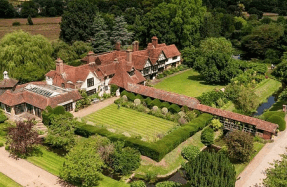little dog trots behind a boy, a red-coated rider and his horse in Constable’s 1830 copy of Jacob (about 1655), bounding on its tiny legs towards the right edge of the canvas. The pooch and his companions are conspicuously missing from the Dutch artist’s work, but they are not entirely a flight of Constable’s fancy. They had been overpainted onto Ruisdael’s original, most likely in the late 18th century by art dealer Francis Bourgeois, one of the founders of the Dulwich Picture Gallery (), where both landscapes now hang. ‘We think that Bourgeois potentially added in horse, rider and dog to in order to make it more appealing to the art market,’ says the gallery’s director Jennifer Scott (some art historians think Constable didn’t copy the dog, introducing it instead into his own version to set it apart from Ruisdael’s, but she disagrees). When the painting was restored in the late 1990s, conservators removed the ‘improvements’—but their memory survives in Constable’s work.
Spot the difference
Jan 03, 2024
1 minute
You’re reading a preview, subscribe to read more.
Start your free 30 days



